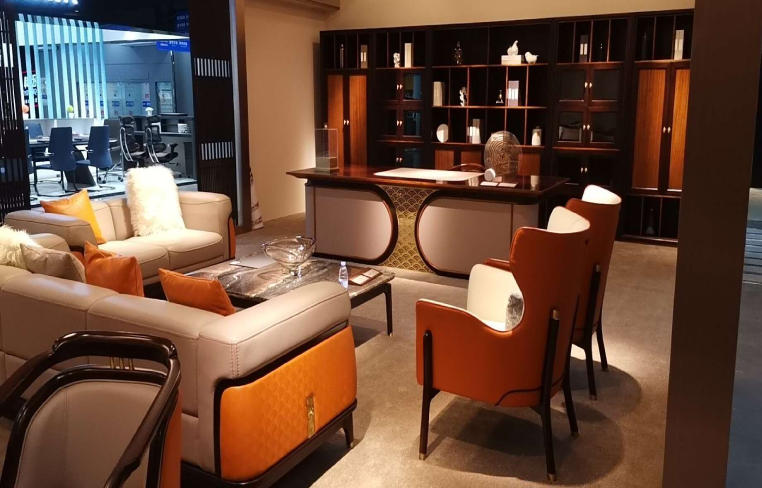Exploring the Diverse World of Furniture Upholstery
Furniture upholstery is not just about aesthetics; it's about comfort, durability, and style. The upholstery of a piece of furniture can completely transform its appearance and functionality. From traditional to contemporary, there's a myriad of options available to suit every taste and need.
Fabric Upholstery
Fabric upholstery is perhaps the most common type, known for its versatility and wide range of options. Fabrics come in various materials such as cotton, linen, wool, polyester, and silk, each offering distinct characteristics. Cotton and linen are breathable and soft, while wool provides warmth and durability. Polyester is resistant to wrinkles and fading, making it a practical choice for high-traffic areas. Silk, on the other hand, adds luxury and elegance but requires delicate care. With countless patterns, colors, and textures available, fabric upholstery allows for endless customization to complement any interior design scheme.
Leather Upholstery
Leather upholstery exudes sophistication and luxury. It's renowned for its durability, easy maintenance, and timeless appeal. Genuine leather develops a rich patina over time, enhancing its beauty with age. Additionally, leather upholstery is available in different types such as full-grain, top-grain, and bonded leather, each offering unique characteristics in terms of quality and price. Full-grain leather, made from the outermost layer of the hide, retains natural imperfections, giving it a distinctive look and feel. Top-grain leather is more uniform in appearance and undergoes minimal processing, making it highly durable. Bonded leather, composed of leather scraps bonded together, provides a budget-friendly option without compromising on style.
Vinyl Upholstery
Vinyl upholstery offers a practical and affordable alternative to leather. It mimics the look and feel of genuine leather while being easier to clean and maintain. Vinyl is highly durable, water-resistant, and resistant to stains, making it ideal for households with children or pets. Moreover, it comes in a wide array of colors and textures, allowing for endless design possibilities. From sleek and modern to classic and traditional, vinyl upholstery caters to diverse tastes and preferences.
Microfiber Upholstery
Microfiber upholstery has gained popularity in recent years for its exceptional durability and stain resistance. Made from finely woven synthetic fibers, microfiber is incredibly soft to the touch and resistant to wrinkles and fading. It's also easy to clean, as most stains can be removed with just water and a mild detergent. Microfiber upholstery is available in various textures, including suede-like finishes, offering a luxurious look without the high maintenance associated with genuine suede.
Velvet Upholstery
Velvet upholstery adds a touch of opulence and glamour to any space. Known for its plush texture and lustrous sheen, velvet fabric instantly elevates the aesthetic of furniture. It's available in a wide range of colors, from rich jewel tones to soft pastels, making it a versatile choice for both modern and traditional interiors. While velvet requires careful maintenance to prevent crushing and staining, its luxurious appearance and tactile appeal make it worth the effort.

What factors should I consider when choosing upholstery fabric?
Consider factors such as durability, maintenance requirements, color, pattern, texture, and the intended use of the furniture piece. Choose a fabric that complements your lifestyle and interior décor while meeting your specific needs.
Is leather upholstery suitable for households with pets?
Genuine leather is durable and can withstand some wear and tear from pets. However, it's not completely scratch-proof, so it's essential to trim pets' nails regularly and provide them with designated areas for scratching. Additionally, consider protective covers or throws to minimize damage to leather furniture.
Are there any eco-friendly options for upholstery fabric?
Yes, there are eco-friendly upholstery fabrics made from sustainable materials such as organic cotton, linen, hemp, and recycled fibers. Look for fabrics that are certified by organizations such as the Global Organic Textile Standard (GOTS) or the Forest Stewardship Council (FSC) to ensure they meet environmental and ethical standards. Additionally, consider reupholstering existing furniture with eco-friendly fabrics as a sustainable alternative to purchasing new pieces.
How can I protect my upholstered furniture from sun damage and fading?
Direct sunlight can cause upholstery fabrics to fade and deteriorate over time. To protect your furniture, position it away from direct sunlight or use curtains, blinds, or UV-blocking window film to filter out harmful rays. Additionally, consider applying a fabric protector or using slipcovers to provide an extra layer of protection against sun damage.
How do I clean and maintain different types of upholstery?
Cleaning and maintenance procedures vary depending on the type of upholstery fabric. For fabric upholstery, vacuum regularly and spot clean with a mild detergent as needed. Leather upholstery requires periodic conditioning to maintain its suppleness and prevent cracking. Microfiber upholstery can typically be cleaned with water and a mild detergent, while velvet upholstery may require professional cleaning to avoid crushing or matting.
Conclusion
Furniture upholstery plays a significant role in enhancing the comfort, style, and durability of furniture pieces. Whether you prefer the classic elegance of leather, the versatility of fabric, or the luxurious feel of velvet, there's a type of upholstery to suit every taste and lifestyle. By understanding the characteristics and benefits of each upholstery type, you can make informed decisions to create a space that reflects your style and meets your functional needs.
